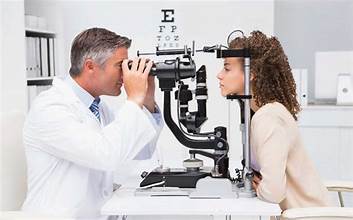Restoring Post-Traumatic Nasal Injuries with Rhinoplasty Surgery

The nose, prominent on our face, is unfortunately susceptible to injury. While some injuries may heal without issue, others leave behind deformities. Post-traumatic nasal injuries can have a profound impact on both the form and function of the nose. Whether resulting from accidents, sports injuries, or other traumatic incidents, such injuries can lead to significant aesthetic and respiratory issues.
This is where rhinoplasty, often referred to as “nose surgery,” steps in. It offers a solution that goes beyond cosmetic enhancement and encompasses the restoration of nasal structure and function. Let’s explore the various aspects of how rhinoplasty corrects post-traumatic nasal injuries. Shedding light on the surgical procedures and the transformative impact it has on patients’ lives.
Common Types of Post-Traumatic Nasal Injuries
Post-traumatic nasal injuries can manifest in various ways, ranging from fractures and dislocations to damaging bones, cartilage, and soft tissues. These injuries often result in altered nasal aesthetics, breathing difficulties, and sometimes, even chronic health issues. The nasal structure is delicate, and any trauma can lead to misalignment, deformities, or obstruction of the airways.
Nasal injuries encompass a range of conditions resulting from physical trauma to the nose. Here are some common types:
Nasal Fractures
Nasal fractures occur when the bones of the nose are broken or displaced due to trauma. This can result from accidents, falls, sports injuries, or physical altercations. Nasal fractures may involve the nasal bones, septum, or both, thus leading to pain, swelling, and visible deformity.
Septal Deviations
A septal deviation refers to the displacement or deviation of the nasal septum, which is the thin wall made of cartilage & bone that separates the left and right nasal cavities. This deviation can occur due to trauma to the nose, causing the septum to bend or buckle from its normal position. As a result, nasal passages may become obstructed, leading to symptoms such as nasal congestion, breathing issues, and recurrent sinus infections.
Cartilage Dislocation
Trauma to the nose can also result in dislocation or displacement of the nasal cartilage, particularly the lower lateral cartilages that shape the nasal tip. This can lead to asymmetry, deformity, and functional impairment, affecting both the appearance and function of the nose.
Soft Tissue Injuries
Soft tissue injuries involving the skin, nasal mucosa, and surrounding structures are common following nasal trauma. This may include ripping, swellings, and abrasions to the nasal skin, as well as injury to the nasal mucous membranes. Soft tissue injuries can cause pain, swelling, bleeding, and infection.
Nasal Septal Hematoma
It is a collection of blood within the nasal septum. It typically occurs as a result of blunt trauma or nasal fractures. Moreover, it presents as a swollen, blueish mass within the nasal cavity and requires prompt drainage to prevent complications such as infection or septal perforation.
Nasal Vestibular Stenosis
Nasal vestibular stenosis refers to the narrowing or constriction of the nasal vestibule, the area just inside the nostrils. It can occur secondary to trauma, mainly if there is damage to the nasal cartilage or soft tissue support structures. Nasal vestibular stenosis may cause nasal obstruction, difficulty breathing, and aesthetic changes to the nostrils.
Nasal Valve Collapse
Trauma to the nose can weaken or disrupt the nasal valve, the narrowest segment of the nasal airway responsible for regulating airflow and maintaining nasal opening. Moreover, its collapse can result in symptoms such as nasal congestion, difficulty breathing, and snoring, thus impacting both nasal function and quality of life.
Diagnosis of Post-Traumatic Nasal Injuries
Before undergoing rhinoplasty for post-traumatic nasal injuries, a comprehensive evaluation is essential. It typically involves a detailed medical history, physical examination, and diagnostic imaging, like X-rays or CT scans. The surgeon assesses the extent of the injury, identifies any functional impairments, and discusses the patient’s aesthetic concerns and goals. In cases of severe trauma, additional evaluation by an ENT specialist may be necessary to ensure optimal functional outcomes.
Treatment – Rhinoplasty Surgery as a Restorative Solution
Rhinoplasty, or a nose job, is a surgical treatment to reshape or reconstruct the nose. It can be done for various reasons, including improving the nose shape, correcting breathing problems, or repairing damage from an injury. During surgery, the surgeon may alter the size, shape, or angle of the nose by reshaping the bone, cartilage, or soft tissues. However, it’s essential to consult with a plastic surgeon to discuss your objectives and determine if rhinoplasty is the right option for you.
The approach of rhinoplasty surgery is determined by both the severity of the injury and the desired outcome:
Closed Rhinoplasty
This technique involves incisions made entirely within the nasal cavity, thus resulting in minimal visible scarring. It is suitable for minor fractures and soft tissue adjustments where access to the nasal structures is relatively straightforward.
Open Rhinoplasty
It involves an additional incision across the columella (the tissue between the nostrils), thus allowing for better visualization and manipulation of the nasal anatomy. Surgeons prefer this approach for more extensive reconstructions or cases requiring precise alterations.
Procedure of Rhinoplasty Surgery
The specific techniques used in rhinoplasty for post-traumatic injuries vary based on the individual case.
Cartilage Grafting
In cases where the nasal cartilage is damaged, surgeons may need to perform cartilage grafting to provide structural support and enhance nasal contour. They can gather cartilage grafts from various sources, including the septum, ear, or rib, and meticulously sculpt them to achieve the desired shape and symmetry.
Septoplasty
Surgeons use this surgical technique to correct a deviated septum, which commonly occurs as a consequence of nasal trauma. The septum, the partition between the nasal passages, may become displaced or fractured, thus leading to breathing difficulties and nasal congestion. Septoplasty involves straightening and repositioning the septal cartilage to improve airflow and restore nasal function.
Soft Tissue Reconstruction
Soft tissue injuries to the nose resulting from trauma can be problematic. For example, the skin and nasal mucosa may require reconstruction to restore a natural appearance and optimize healing. Moreover, surgeons may utilize techniques such as skin flaps, tissue rearrangement, and grafting to address defects and improve overall aesthetic outcomes.
Nasal Fracture Reduction
If the nasal bones are fractured or displaced, a procedure known as nasal fracture reduction may be performed to realign the bones and restore facial symmetry. It involves carefully manipulating the fractured segments back into their proper position and securing them with splints or internal fixation devices.
The Importance of Postoperative Care
Postoperative care is essential for ensuring successful recovery after rhinoplasty surgery. Adhering to the surgeon’s instructions and providing proper care can minimize discomfort, lower the risk of complications, and encourage optimal healing. Below are essential guidelines for postoperative care following rhinoplasty;
Rest and Recovery
Rest is essential during the initial days following rhinoplasty surgery. Patients should avoid strenuous activities, like bending over and heavy lifting, as these activities can cause swelling and discomfort. Moreover, adequate rest allows the body to heal more efficiently.
Head Elevation
Keeping the head elevated, especially while sleeping, helps reduce swelling and promote drainage of fluids from the surgical site. Patients should rest with their heads elevated on multiple pillows or use a recliner chair to maintain an elevated position.
Cold Compresses
The use of ice packs or cold compresses on the nasal area can help relieve swelling and alleviate discomfort. Patients should use gentle pressure and avoid placing ice directly on their skin to prevent frostbite or skin damage. Cold compresses can be applied for short intervals, typically 10-15 minutes at a time, several times a day during the initial postoperative period.
Nasal Packing and Splints
In some cases, surgeons may place nasal packing or splints inside the nostrils or along the nasal bridge to support the nasal structures and minimize swelling. Patients should follow the surgeon’s instructions regarding the care and removal of nasal packing or splints, which surgeons typically perform during a follow-up appointment within the first week after surgery.
Medication Management
Patients will be prescribed pain medications and antibiotics to manage pain and prevent infection following rhinoplasty surgery. It is essential to take these medications as directed by the surgeon and to avoid aspirin or nonsteroidal anti-inflammatory drugs (NSAIDs), which can increase the risk of bleeding.
Gentle Nasal Care
Keeping the nasal passages moist and clean is essential for promoting healing and preventing infection. Patients may be instructed to gently clean the nostrils with saline solution or nasal irrigation kits provided by the surgeon. Moreover, it is advised to avoid blowing the nose forcefully or inserting any objects into the nostrils during the early stages of recovery.
Conclusion
Rhinoplasty surgery emerges as a crucial and effective intervention in correcting the consequences of post-traumatic nasal injuries. Its dual focus on aesthetic enhancement and functional restoration makes it a comprehensive solution for individuals seeking to overcome the challenges posed by nasal trauma. Moreover, rhinoplasty goes beyond cosmetic improvements, significantly impacting patients’ overall well-being. The careful application of surgical techniques, coupled with personalized postoperative care, ensures that individuals not only regain their nasal aesthetics but also experience enhanced respiratory function and improved quality of life.



